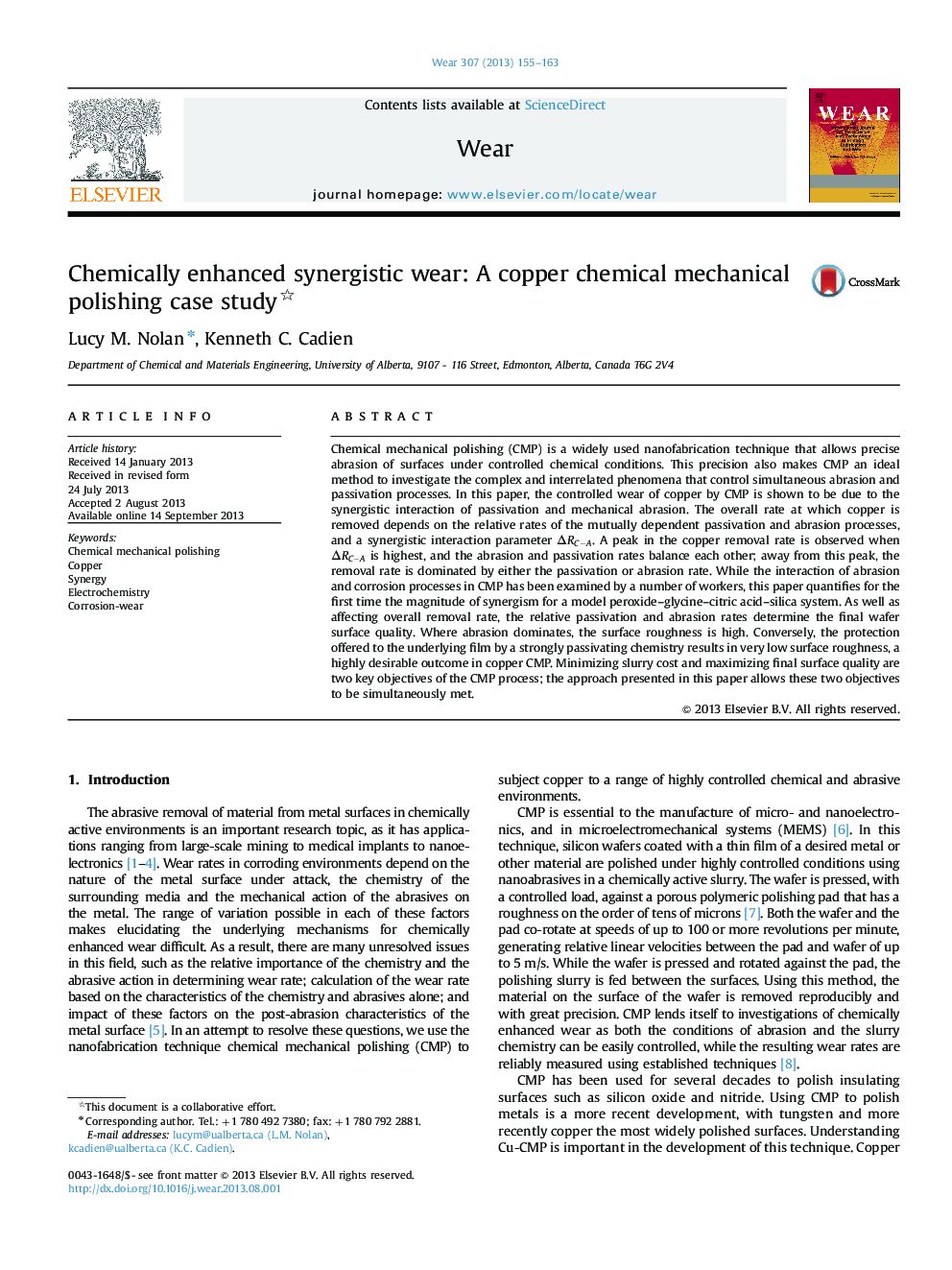| Article ID | Journal | Published Year | Pages | File Type |
|---|---|---|---|---|
| 617484 | Wear | 2013 | 9 Pages |
•We use chemical mechanical polishing (CMP) of copper to investigate chemical and abrasive wear actions.•Chemical and abrasive effects are measured separately and together to determine their individual and combined contributions.•The wear mechanism is found to be synergistic in nature, with more than 75% of the wear rate attributable to interaction effects in some cases.•The wear mechanism also affects the final surface quality of the copper.
Chemical mechanical polishing (CMP) is a widely used nanofabrication technique that allows precise abrasion of surfaces under controlled chemical conditions. This precision also makes CMP an ideal method to investigate the complex and interrelated phenomena that control simultaneous abrasion and passivation processes. In this paper, the controlled wear of copper by CMP is shown to be due to the synergistic interaction of passivation and mechanical abrasion. The overall rate at which copper is removed depends on the relative rates of the mutually dependent passivation and abrasion processes, and a synergistic interaction parameter ΔRC−AΔRC−A. A peak in the copper removal rate is observed when ΔRC−AΔRC−A is highest, and the abrasion and passivation rates balance each other; away from this peak, the removal rate is dominated by either the passivation or abrasion rate. While the interaction of abrasion and corrosion processes in CMP has been examined by a number of workers, this paper quantifies for the first time the magnitude of synergism for a model peroxide–glycine–citric acid–silica system. As well as affecting overall removal rate, the relative passivation and abrasion rates determine the final wafer surface quality. Where abrasion dominates, the surface roughness is high. Conversely, the protection offered to the underlying film by a strongly passivating chemistry results in very low surface roughness, a highly desirable outcome in copper CMP. Minimizing slurry cost and maximizing final surface quality are two key objectives of the CMP process; the approach presented in this paper allows these two objectives to be simultaneously met.
